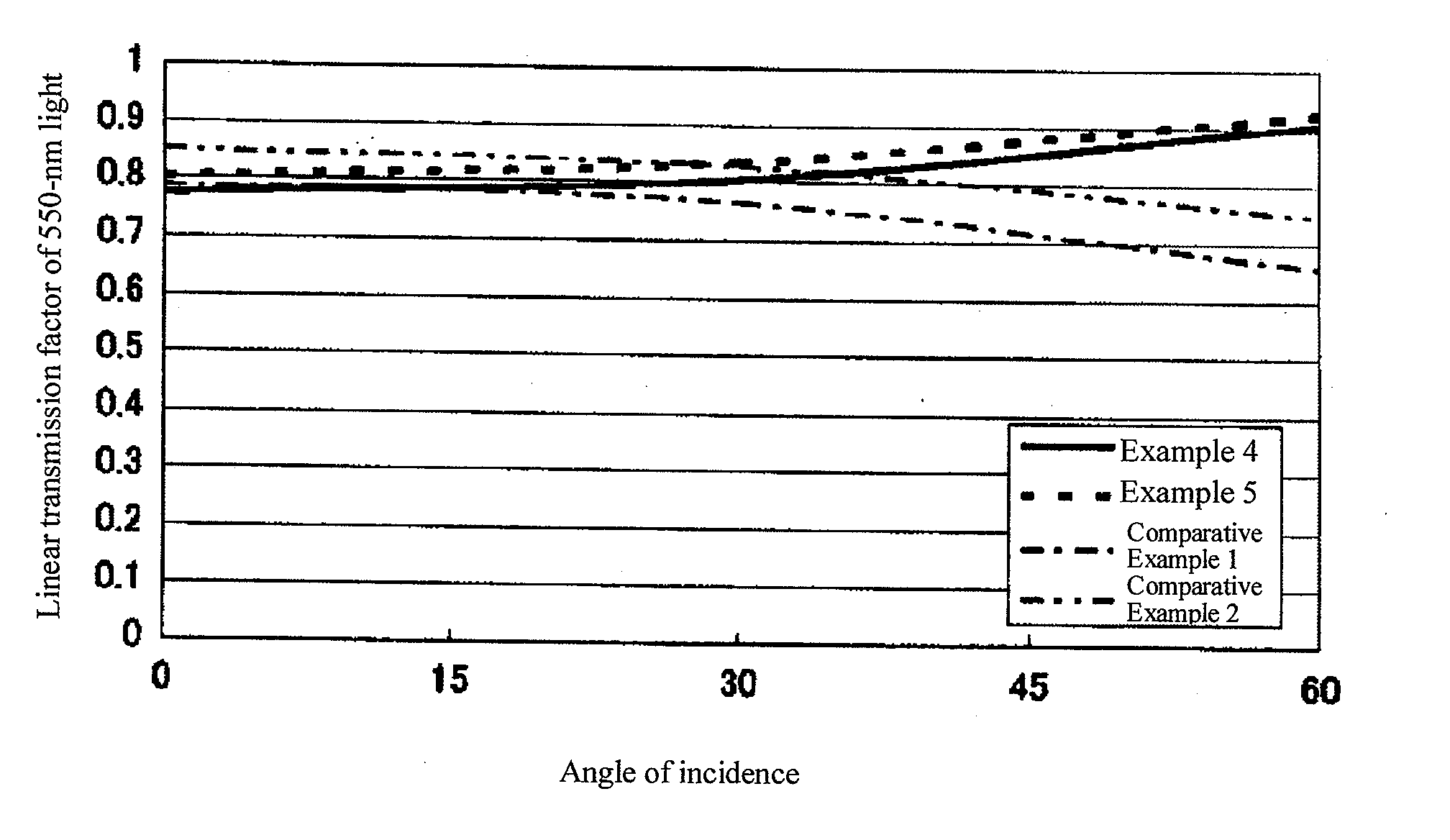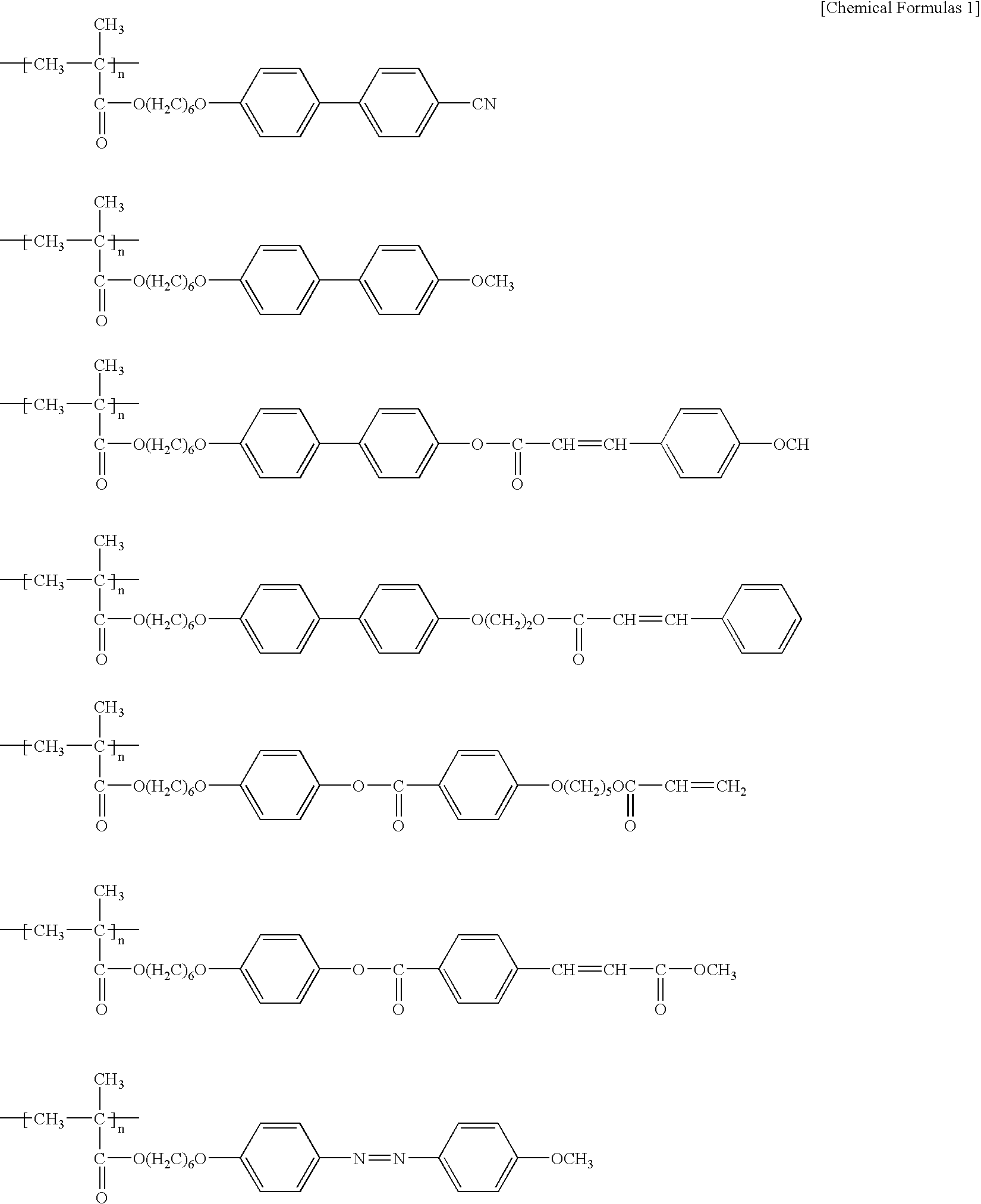Optical film, method for producing same, and polymer liquid crystal particle
a technology of optical film and liquid crystal particles, applied in the field of optical film, can solve the problems of unnecessary scattering of image information output from inside the display, the scattering of external light on the surface, and the scattering of image information output from the display to enlarge the viewing angle, so as to reduce the scattering of light, suppress the mixing of colors, and increase the direct transmittance of light entering at 30°
- Summary
- Abstract
- Description
- Claims
- Application Information
AI Technical Summary
Benefits of technology
Problems solved by technology
Method used
Image
Examples
example 1
[0044] As a polymeric monomer, 3.0 g of the compound expressed by formula (1) below, 2.0 g of the compound expressed by formula (2) below, and 0.02 part of 2,2′-azobis(isobutyl nitrile) used as a polymerization initiator, were mixed in 200 ml of 0.10% aqueous polyvinyl alcohol solution at 5° C. to obtain a reaction solution of polymeric monomer.
[0045] This reaction solution of polymeric monomer was agitated using a homogenizing mixer operated at 5,000 rpm to prepare an emulsion of polymeric monomer. This emulsion was further agitated using a homogenizing mixer operated at 5,000 rpm in the presence of nitrogen to cause polymerization under heat at 80° C. for 5 hours. The resulting solution was filtered to obtain 4.3 parts of polymer liquid crystal fine particles. When the obtained polymer liquid crystal fine particles were observed using a scanning electron microscope, the particles had a spherical shape. The particle size measured by the Coulter counter method was 5.1 μm, and the a...
example 2
[0046] As a polymeric monomer, 3.0 g of the compound expressed by formula (1) above, 2.0 g of the compound expressed by formula (2) above, and 0.02 g of 2,2′-azobis(isobutyl nitrite) used as a polymerization initiator, were mixed in 200 ml of THF at 5° C. to obtain a reaction solution of polymeric monomer. This reaction solution of polymeric monomer was agitated with a magnetic stirrer in the presence of nitrogen to cause polymerization under heat at 54° C. for 24 hours, and then cooled and filtered to obtain 4.1 g of white high-molecular liquid crystal compound. When measured by GPC, the average volumetric molecular weight of this high-molecular liquid crystal compound was approx. 80000.
[0047] Next, 2.0 g of the high-molecular liquid crystal compound was blended with 20 g of anisole and dissolved under heat at 80° C. to obtain a solution. The resulting solution was cooled to 5° C., and then filtered to obtain 1.9 g of polymer liquid crystal fine particles. When observed on a scann...
example 3
[0048] 2.0 g of the high-molecular liquid crystal compound obtained in Example 2 was dissolved in 40 g of chloroform to obtain a solution. Next, the solution was atomized by a spray dryer into droplet with a particle size of 10 μm, and then dried under hot air of 100° C. to obtain 0.6 g of polymer liquid crystal fine particles. When observed on a scanning electron microscope, the obtained polymer liquid crystal fine particles had a spherical shape, and their particle size was measured as approx. 4.0 μm by the Coulter counter method.
PUM
| Property | Measurement | Unit |
|---|---|---|
| particle size | aaaaa | aaaaa |
| Ra | aaaaa | aaaaa |
| wavelength | aaaaa | aaaaa |
Abstract
Description
Claims
Application Information
 Login to View More
Login to View More - R&D
- Intellectual Property
- Life Sciences
- Materials
- Tech Scout
- Unparalleled Data Quality
- Higher Quality Content
- 60% Fewer Hallucinations
Browse by: Latest US Patents, China's latest patents, Technical Efficacy Thesaurus, Application Domain, Technology Topic, Popular Technical Reports.
© 2025 PatSnap. All rights reserved.Legal|Privacy policy|Modern Slavery Act Transparency Statement|Sitemap|About US| Contact US: help@patsnap.com



